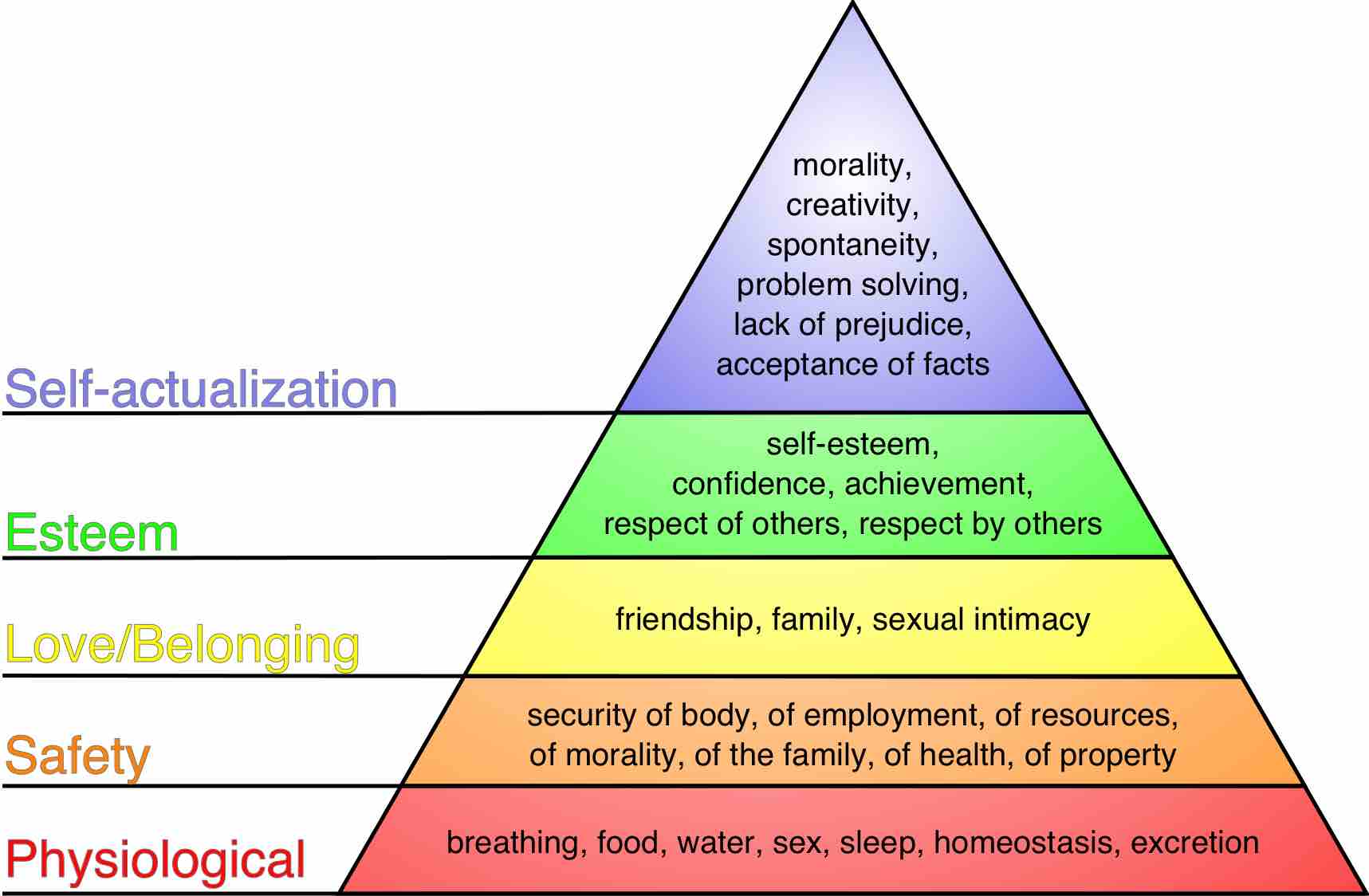We all think of ourselves as having various needs—the need for food, for example, or the need for companionship—that influence our choices and behaviors. This idea also underlies some theories of motivation. In 1943, Abraham Maslow proposed a hierarchy of needs that spans the spectrum of motives, ranging from the biological to the individual to the social.
Motivation and Needs
Maslow's theory defines motivation as the process of satisfying certain needs that are required for long-term development. According to Maslow, a need is a relatively lasting condition or feeling that requires relief or satisfaction, and it tends to influence action over the long term. Some needs (like hunger) may decrease when satisfied, while others (like curiosity) may not.
Maslow's Hierarchy
Maslow's theory is based on a simple premise: human beings have needs that are hierarchically ranked. There are some needs that are basic to all human beings, and in their absence, nothing else matters. We are ruled by these needs until they are satisfied. After we satisfy our basic needs, they no longer serve as motivators and we can begin to satisfy higher-order needs.
Maslow organized human needs into a pyramid that includes (from lowest-level to highest-level) physiological, safety, love/belonging, esteem, and self-actualization needs. According to Maslow, one must satisfy lower-level needs before addressing needs that occur higher in the pyramid. For example, if someone is starving, it is quite unlikely that he will spend a lot of time, or any time at all, wondering whether other people think he is good person. Instead, all of his energies are geared toward finding something to eat.

Maslow's Hierarchy of Needs
In Maslow's hierarchy of needs, higher levels of needs can only be pursued when the lower levels are fulfilled.
Physiological Needs
The most basic of Maslow's needs are physiological needs, such as the need for air, food, and water. When you are very hungry, for example, all your behavior may be motivated by the need to find food. Once you eat, the search for food ceases, and the need for food no longer motivates you.
Safety Needs
Once physiological needs are satisfied, people tend to become concerned about safety needs. Are they safe from danger, pain, or an uncertain future? At this stage they will be motivated to direct their behavior toward obtaining shelter and protection in order to satisfy this need.
Love/Belonging Needs
Once safety needs have been met, social needs for love/belonging become important. This can include the need to bond with other human beings, the need to be loved, and the need to form lasting attachments. Having no attachments can negatively affect health and well-being; as a result, people are motivated to find friends and romantic partners.
Esteem Needs
Once love and belonging needs have been satisfied, esteem needs become more salient. Esteem needs refer to the desire to be respected by one's peers, to feel important, and to be appreciated. People will often look for ways to achieve a sense of mastery, and they may seek validation and praise from others in order to fulfill these needs.
Self-Actualization
At the highest level of the hierarchy, attention shifts to the need for self-actualization, which is a need that essentially equates to achieving one’s full potential. This can be seen in acquiring new skills, taking on new challenges, and behaving in a way that will help you to achieve your life goals. According to Maslow and other humanistic theorists, self-actualization reflects the humanistic emphasis on positive aspects of human nature. Maslow suggested that this is an ongoing, life-long process and that only a small percentage of people actually achieve a self-actualized state.